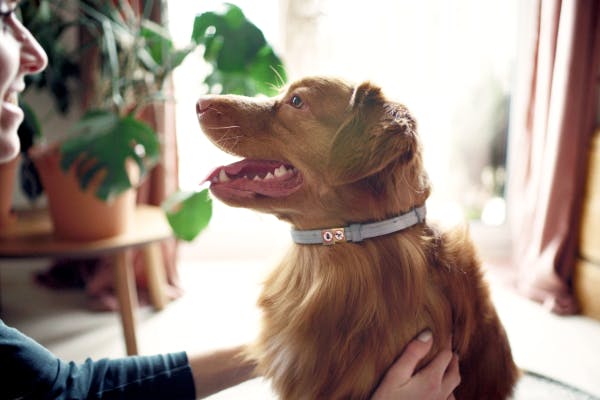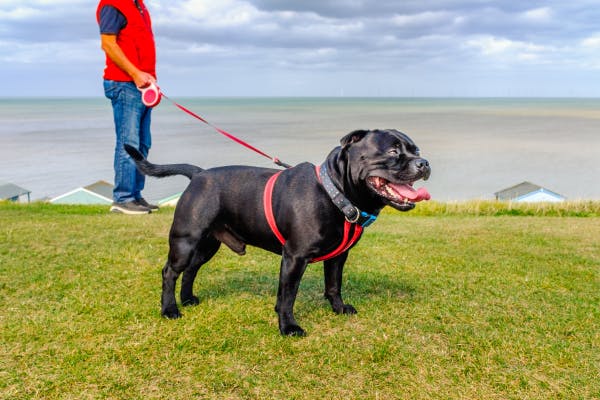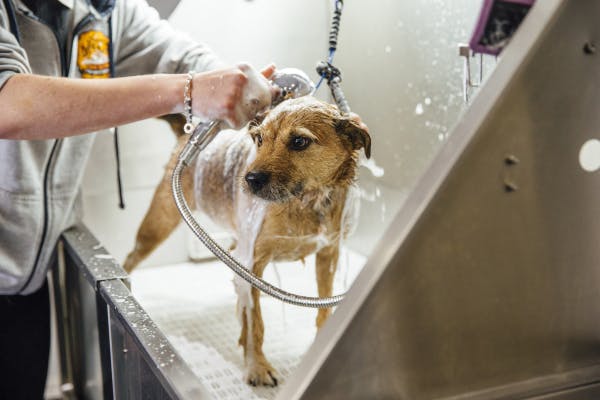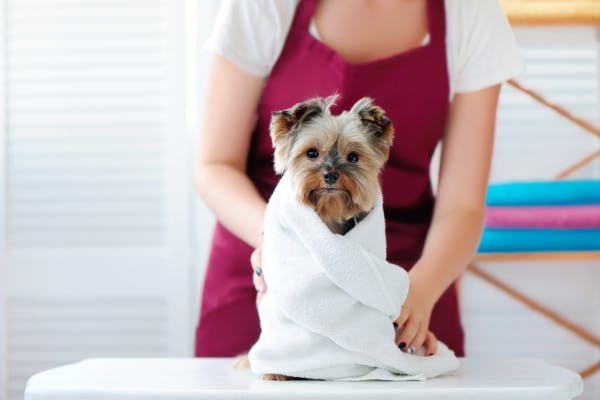Leashes in U.S.A
Best Dog Leashes
Choosing the best dog leash involves considering factors like purpose, material, length, width, style, and comfort. Popular materials include nylon, leather, and rope. Standard leashes range from 4 to 8 feet in length.
Why You Should Trust Us
Handpicked leashes. Our expert researchers, data analysts, and editors have put more than 58 hours of effort into researching the best available dog leashes in the United States. We had researched 840 leashes sold in 5 countries before handpicking the 26 best dog leashes.
- Hours Researched
- 58+
- Products Researched
- 840
- Products Handpicked
- 26
- Acceptance Rate
- 3.1%
How to choose The Best leash:
When you are searching for the perfect leash for your pet, it is essential to consider a few key factors to ensure a comfortable and enjoyable walking experience for both you and your dog. One important aspect to focus on is the material used in the leash's construction. Durability is crucial, as it directly impacts the longevity and reliability of the product. High-quality materials, such as nylon, leather, or rope, are excellent choices because they can withstand daily wear and tear while providing a secure connection between you and your dog. By investing in a durable leash, you will save money in the long run by reducing the need for frequent replacements.
Another essential feature to look for in a leash is the comfort of the handle. Since you will be holding onto this part of the leash throughout your walks, it is vital that it feels comfortable in your hand and provides a secure grip. Leashes with ergonomic or padded handles can help minimize strain on your hand and ensure a more enjoyable walking experience. Additionally, consider the length of the leash and whether or not it offers adjustability. The ideal length varies depending on your dog's size, behavior, and your personal preferences. Generally, a leash between 4-6 feet in length is suitable for most dogs, allowing them enough room to explore while still maintaining control. If you have an energetic or strong dog, you may prefer an adjustable length option to customize the leash to better suit your needs.
By focusing on these three key factors - durability, handle comfort, and length - you will be well on your way to finding the perfect leash for both you and your dog. Keep in mind that additional features such as reflective elements or stylish designs can also enhance your walking experience but should be considered secondary to these core aspects. Happy shopping!
4 types of dog leashes:
common questions about leashes:
- What factors should I consider before purchasing a dog leash?
- What are the different types of dog leashes and their benefits?
- How do a dog's size and age influence leash selection?
- What is the ideal length and material for a dog leash?
- How important is visibility and reflective material in a dog leash?
- What features should I look for in a leash for small dogs versus large dogs?
Retractable Leashes
- our rating97 out of 100
- our rating95 out of 100
- our rating89 out of 100
Retractable leashes are not suitable for all dogs, as they work best for well-trained dogs with good leash manners and voice control. They are not recommended for untrained dogs, puppies, or dogs that constantly pull on the leash, as they can reinforce bad habits and pose safety risks. Before using a retractable leash, ensure your dog walks politely on a standard six-foot leash. Retractable leashes should be used in open, quiet areas without potential tangle hazards. In busy environments or near busy roads, a regular flat leash is safer and provides more control.
Learn About Retractable Leashes
Hands Free Leashes
- our rating98 out of 100
- our rating94 out of 100
- our rating92 out of 100
Hands-free dog leashes offer several advantages:
They reduce strain on the upper body by attaching the leash to a waist belt, eliminating the need to hold it with your hands.
They are suitable for well-behaved dogs, allowing you to walk them alongside strollers, shop, or hike without holding the leash.
Running with your dog is more convenient since you don't have to hold the leash, and many dogs pull less when running next to their owner.
Hands-free leashes enable pulling workouts like canicross, providing an intense workout for both you and your dog.
Indoor training becomes easier as you can practice polite leash walking and reward your dog with treats while keeping both hands free.
However, hands-free leashes may not suit all dogs and situations. They might not provide enough control for dogs who pull excessively or are stronger than their handlers, and may not be the best tool for practicing heeling or loose-leash walking outdoors.
Leather Leashes
- our rating97 out of 100
- our rating96 out of 100
- our rating96 out of 100
To find the perfect leather dog leash size and width, consider your dog's size, weight, behavior, and the leash's purpose. For larger, heavier dogs, opt for a wider, thicker leash for better control and durability. Smaller dogs can use thinner, narrower leashes. Ensure the width is comfortable to hold in your hand. A 6-foot leash is recommended for daily walks, while shorter leashes are suitable for specific training exercises. If your dog pulls on the leash or has poor leash behavior, choose a thicker, more durable option.
Learn About Leather Leashes
Rope Leashes
- our rating98 out of 100
- our rating96 out of 100
- our rating96 out of 100
A dog rope leash offers numerous advantages for both the dog and its owner. These benefits include durability, as rope leashes are made from strong materials that can withstand force and chewing. They also provide safety, ensuring a secure connection between the owner and the dog. Many rope leashes have padded handles for added comfort during walks or training sessions. They are versatile, suitable for various situations and dogs of all sizes and breeds. Rope leashes offer better control compared to retractable leashes and come in various colors and styles. Some models even feature reflective stitching for increased visibility during nighttime walks or low-light conditions.
Learn About Rope Leashes
Questions About Leashes
What factors should I consider before purchasing a dog leash?
Purpose: Identify the leash's main use, such as daily walks, training, or specific activities like hiking or running.
Material: Common leash materials are nylon, leather, polypropylene rope, and synthetic DuraSoft, each offering different benefits in durability, comfort, and maintenance.
Length and Width: Select an appropriate length and width based on your dog's size, strength, and desired control during walks. Standard leashes range from 4 to 8 feet, while adjustable and retractable options provide more flexibility.
Style and Fastener Type: Consider the fastener that connects the leash to the collar; it should be strong and secure.
Type of Leash: Various leash types include standard, retractable, adjustable, chain, martingale, and double (multiple dog) leashes. Choose one that suits your needs and your dog's behavior.
Handle Comfort: Ensure the handle is comfortable to hold during walks to avoid discomfort or accidental release.
Additional Features: Some leashes offer special features like hands-free options or multiple attachment points for walking multiple dogs at once.
What are the different types of dog leashes and their benefits?
There are various types of dog leashes, each with unique benefits depending on the dog's and owner's needs. Some common types include:
Flat Leads: Standard dog leashes made of nylon or rope, offering good control for everyday use and basic training.
Rubber Lead (Bungee): Elastic leashes that protect both owner and dog from strain when pulled abruptly, ideal for jogging or running with your dog.
Gentle Leaders: Head collars designed to prevent dogs from using their full weight to pull, perfect for dogs who pull a lot.
Harness Leaders: Leashes suited for dogs with tracheal problems, as they provide better control without putting pressure on the neck.
Slip Lead: Ideal for training young dogs not to pull, functioning as both a leash and collar.
Martingale: Similar to slip leads, they tighten to the exact size of the dog's neck, preventing slipping out or pulling too hard.
Retractable: Leashes that allow dogs to run farther than average while still maintaining control, with adjustable length.
Double Dog Leash: Used for walking multiple dogs on a single leash, perfect for owners of multiple dogs or professional dog walkers.
The best leash depends on the specific needs, behavior, and intended use for your dog.
How do a dog's size and age influence leash selection?
A dog's size and age significantly impact leash choice. Larger, stronger dogs need wider, durable leashes for safety and control, while smaller dogs benefit from narrower, lighter options. Consider your dog's size and strength when selecting a leash width.
For young puppies, shorter leashes (3-4 feet) provide better control during training and in unfamiliar situations. As they grow and improve their leash manners, gradually increase the leash length (5-6 feet) to give them more freedom while maintaining control. A standard 6-foot leash is typically suitable for older, well-behaved dogs. However, if an older dog has mobility or health issues, a shorter leash may be more appropriate.
It's crucial to consider your dog's age, size, temperament, training level, and environment when selecting the right leash length.
What is the ideal length and material for a dog leash?
The ideal dog leash length and material depend on the dog's size, temperament, and the situation. A standard six-foot leash made of flat nylon, rope, or leather works well for most dogs. Long leashes can be used for well-behaved, trained dogs, while short leashes are better for crowded areas or strong pullers.
Regarding materials:
Nylon: Lightweight, durable, affordable, and available in various colors and widths. Not ideal for dogs that chew leashes.
Leather: Elegant and long-lasting with proper care. More expensive and requires maintenance. Suitable for dogs with good leash-walking skills.
Rope: Durable and comfortable with reflective material for nighttime visibility.
Vegan Leather: Animal-free materials like synthetic coating over woven fabric offer water-resistance, durability, and color variety.
Avoid retractable leashes due to control and safety concerns. The ideal leash depends on individual needs, preferences, and the dog's behavior.
How important is visibility and reflective material in a dog leash?
Visibility and reflective material in a dog leash are essential for the safety of both the dog and the owner, particularly during low-light situations or nighttime walks. Reflective leashes increase visibility by reflecting light from sources like car headlights or streetlights, allowing drivers and pedestrians to easily spot the dog and owner, reducing accident risks.
A reflective leash is especially important when walking near traffic, as it improves visibility for both the dog and owner, enabling drivers to see them from a distance and react accordingly. Additionally, reflective leashes help others, such as cyclists or joggers, notice the dog in dimly lit areas, preventing potential accidents.
What features should I look for in a leash for small dogs versus large dogs?
When selecting a leash for small or large dogs, consider length, width, material, and type. For small dogs, a 4-6 feet long and narrow (3/8 inch) leash is suitable. For large dogs, opt for a 6-foot long and wider (1/2 to 1 inch) leash. Nylon is a popular material for both sizes, but leather or biothane may be better for larger dogs or strong pullers. Standard leashes work well for all sizes, but harness leashes can be beneficial for larger or stronger dogs. Avoid retractable leashes due to safety concerns. Prioritize comfort and control when making your choice.























